It’s Been a Long Road | Celebrating 50 Years of Star Trek
September 8th 2016 sees Star Trek celebrate its fiftieth anniversary, as five decades have passed since ‘The Man Trap’ was first broadcast (in colour) on American television sets. In that five decades, the franchise has endured everything from budget cuts, cancellations, ill-advised God plots and William Shatner’s hair plugs. But during that time it has always been relevant and to the fans, it’s always been real. Gene Roddenberry (for all his faults) developed an optimistic outlook that humanity could strive towards, when most science fiction has always been content languishing in cynicism and dystopia. He believed that the human adventure was just beginning and all over the world, people still seem to agree.
When Star Trek’s original series (the aptly named ‘Star Trek’) began in 1966, it wasn’t an overnight sensation. The pilot episode ‘The Cage’, wasn’t even aired. The plot saw Captain Christopher Pike (played in earnest by actor Jeffrey Hunter) travelling to a planet called Talos IV, where he encounters a planet being manipulated by a race of super-beings. The network were unhappy with executive producer Gene Roddenberry’s first attempts and ordered him to do another, less cerebral episode.
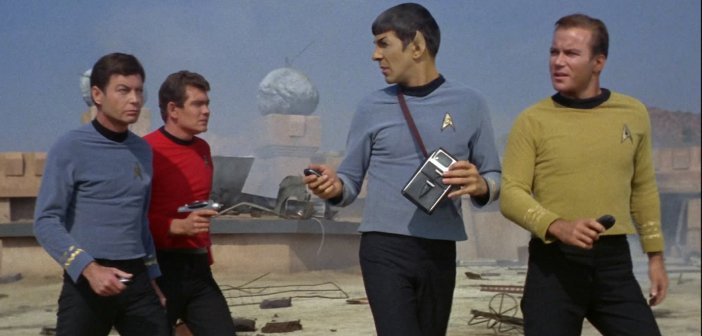
Roddenberry reshuffled the cast and the set, keeping only one aspect of his original vision – the pointy-eared human/alien hybrid forever at odds with his contrasting heritage. Leonard Nimoy’s Spock would go on to become arguably the most iconic and beloved character of the franchise. Alongside Spock, Roddenberry cast a crew so radically inclusive that if the internet had existed in the 1960s, it would have collapsed under the weight of the idiots complaining about the ‘PC Police’. The helmsman, Japanese-American Mr. Sulu, played by George Takei. The communications officer, the strikingly beautiful and strikingly (for 1960s audiences) black Nichelle Nichols, working on the same bridge as southerner Leonard ‘Bones’ McCoy, played with affection by DeForrest Kelley. In the second season, Pavel Chekov, a cheerful Russian officer would come on board, reflecting the series’ ambitious forecast of the human race overcoming political tensions and working together for the good of mankind. The glue keeping the crew together was Captain James T. Kirk, played (with such pomp and circumstance that you could make a sandwich out of the ham and cheese) by the immortal William Shatner. The chemistry of the three lead actors (Shatner, Kelley and Nimoy) cannot be understated when talking about Star Trek’s success. Across the series and especially later on in the film series, the dynamic contrast between Spock’s cold logic, Bones’ emotion-driven anxiety and Kirk’s compromise between the two was designed to mirror the constant struggle of order versus chaos. But in simpler terms, the lads are just great craic when they’re together.
The 79 or so episodes are an incredible treasure trove and a fascinating time capsule for the 1960s. The colourful science fiction backdrop allowed Roddenberry and his team of writers (sci-fi legends David Gerrold, Harlan Ellison and D.C. Fontana – who deftly disguised her name so as not to reveal her gender) to pen stories that asked questions about free love, racial prejudice, the problem of power and above all, the nature of humanity when faced with overwhelming obstacles. All of this, combined with the show’s optimistic portrayal of Earth’s future was profoundly comforting to an audience in the midst of the Cold War. The series also created a dense mythology within itself – Starfleet, the United Federation of Planets, warp speed, Klingons, Romulans, Vulcans, Andorians… there was a lot to keep track of and while the series was quick to remind viewers who needed catching up (the “Captain’s Log” sequences at the start of each act are incredibly useful but sometimes leave you wondering when Captain Kirk had the time to record them), it never insulted the viewer’s intelligence. It was bold new television at the time, wildly unlike anything anyone had seen before.
Despite its lofty ambitions, the Original Series staggered along for two seasons with mediocre ratings and relative disinterest from all but a few critics. What kept Star Trek alive, as would prove to be the case for the following 50 years, was the fans. An aggressive letter-writing campaign convinced the network to commission a third and final season. This tallied up enough episodes that Star Trek became a fixture of television syndication in the 1970s, where its reruns gained more mainstream popularity than the series had ever enjoyed while it was actually on the air. The phenomenon of Star Trek Conventions took flight and when the cast members showed up (expecting a hundred or so people who would quietly applaud, ask a few questions and then leave) they discovered a rapturous reaction not unlike Beatlemania.

In 1977, the world of cinematic science fiction changed forever with the release of George Lucas’ ‘Star Wars’. Suddenly, every studio tried to create their own ‘Star Wars’ with whatever script or property they had their hands on. After various attempts at reviving Star Trek on television had failed (although an animated series did run for two seasons), Paramount put all their weight into a movie (or a ‘motion picture’ as they still called them in those days) with a big budget that would entice not only the avid Trek-fans (the word ‘Trekkies’ was still in its infancy) but mainstream cinemagoers as well. Surprisingly, the main cast was all brought back to the big screen (with the exception of recurring characters such as Nurse Chapel and Yeoman Rand, who were given cameo roles) including a reluctant Leonard Nimoy. The results were odd to say the least – despite an exciting first act, ‘Star Trek: The Motion Picture’ is about half an hour too long and has far too many long, lumbering scenes of people staring out the window waiting for something to happen. The film (written by Roddenberry himself) has a story that could easily have fit into a 45-minute episode, but it’s stretched out for 2 hours (tellingly, the season 1 episode ‘The God Thing’ has an almost identical plot). Nevertheless, the film was enough of a modest financial success that Paramount commissioned a sequel, albeit with a slashed budget. This is where the series took off – ‘Star Trek II: The Wrath of Khan’ – with its last minute rewrites, its laughable budget and its reliance on recycled footage and props from the first film, should have been a total failure. Instead, it’s one of the greatest films ever made. Seriously. Freed from the somewhat suffocating influence of the overzealous Gene Roddenberry (whose creative control was neutered in lieu of a throwaway credit), the film became a rousing love-letter to the characters rather than the hard sci-fi of Motion Picture. In the film, Kirk finds himself squaring off against an old adversary from the series, Khan Noonien Singh (played by Fantasy Island’s Ricardo Montalban and his beautifully exposed chest) as well as facing the realities of growing old. In addition to being a gripping revenge-tale, the film is an incredible character study with excellent writing and a tense plot that weaves in and out of different plot threads effortlessly and leaves you thinking after the end – it’s ‘The Dark Knight’ of its day.
The film series continued with three more sequels (of varying quality) throughout the 80s, keeping the franchise afloat and creating a new generation of fans. III and IV (directed quite effectively by Leonard Nimoy) continue the story of ‘Wrath of Khan’ creating a neat little trilogy, that ends with a hilarious time-travel trip to San Francisco of 1986 where Spock swims with whales. The fifth installment ‘The Final Frontier’ is hilarious for all the wrong reasons – directed by Shatner himself (due to a clause in his contract that stated that if Nimoy was given the chance to direct, than so must he), it’s a flailing, headless turkey of a film. Hindered by a nonsense plot (Spock’s previously-unmentioned half-brother steals the Enterprise to find God), no budget and gleeful ignorance toward the established pseudoscience (it takes the Enterprise a few hours to reach the ‘centre of the Galaxy’, the Enterprise suddenly has 80 decks, etc), it just doesn’t work as anything other than a goofy, apocryphal cartoon – an IMDb message board user once wrote an excellent summation as to why the whole film must be written off as a dream. And yet the interactions of the characters still give it a sweetness that prevents it from ever being unwatchable. The film opens with a scene where Three Lads are camping at Mount Yosemite, drinking whiskey, singing songs and talking about farts (seriously), as only old men do. The pseudo-finale to the original movie series “Star Trek VI The Undiscovered Country”, was a grand return to form, directed by ‘Wrath of Khan’s Nicholas Meyer once again, it brought back the prestige of “Wrath of Khan” with the story of the Federation bartering for peace with the Klingon Empire after a Klingon moon explodes (the film went into production not long after the Berlin Wall fell). It also features a fantastically moustache-twirling performance by Christopher Plummer as a Klingon general.
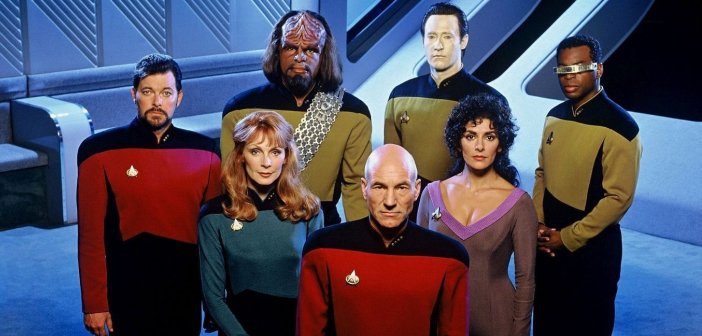
Gene Roddenberry finally managed to regain creative control of a Star Trek project when “Star Trek The Next Generation” went into production. It was a rocky start however – despite an impressive cast, much of the first and most of the second season are marred by dodgy writing, disastrous direction (the episode “Code of Honour” was made by a devout racist and features a planet populated by war-like tribes of black people) and an unclear direction. Rumours abound that Gene Roddenberry’s standalone style of storytelling didn’t gel with the modern television writers of the 80s and the production team would frequently clash with him over their desire to tell modern stories with flawed, complex characters, when he just wanted to tell plot-driven science fiction stories with perfect characters who could do no wrong. In contrast to the Original Series, TNG actually found its feet in season three, becoming yet another one of the greatest television series of all time. As much as I love Kirk, Spock, Bones and their colourful, cardboard adventures in the 1960s version of the future (and beyond), there’s little doubt that TNG evolved into something above and beyond its predecessor. As Roddenberry’s influence waned, the series became a staggeringly real world in itself with Earth-shattering stories that explored almost unimaginable odds and the human solutions for dealing with them. The casting of Patrick Stewart elevated the series to a level of profound greatness it might not have known otherwise – the oft-mentioned “Best of Both Worlds” (where Picard gets captured and turned by space zombies, the Borg) is certainly a very thrilling bit of sci fi adventure, but the real highlights of the series are when Stewart gets to stretch his muscles as an actor. ‘Family’ sees Picard reunite with his crabby older brother at the family vineyard in Paris. ‘Chain of Command’ sees Picard being tortured by a Cardassian general convinced he can break anyone. ‘Tapestry’ brings Picard back to a pivotal decision he made earlier in life that would define the man he would later become. ‘The Inner Light’ – possibly the greatest episode of television ever made – shows Picard wake up in another life, on another planet forced to live and grow and love a lifetime in someone else’s shoes.
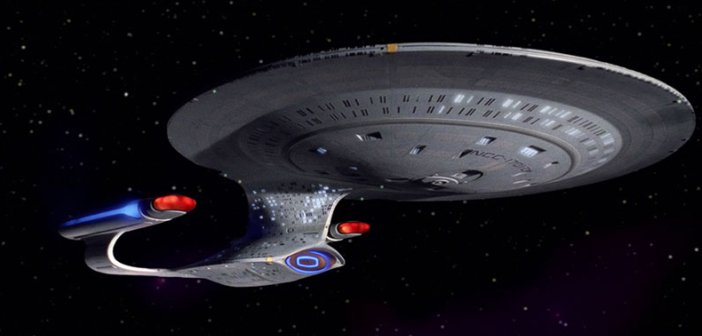
That’s not to say TNG is perfect. Like TOS, there is a sizeable percentage of episodes that are farcically silly or close to unwatchable. Unlike TOS which ran for 79 episodes however, TNG and its 7 seasons x 26 episodes has a lot more clangers to wade through. Additionally, while Stewart was a godsend, the rest of the cast are hit and miss and never became quite as iconic as their predecessors. Geordi LaForge, Commander Riker and Beverly Crusher are all charming, likeable additions to the mythos, but they’re only ever interesting on occasion. Lt Commander Worf, the first Klingon to serve in Starfleet is played to perfection by Michael Dorn and is criminally wasted throughout much of the series. Wunderkind Wesley Crusher is played with great eagerness by Will Wheaton, but he is so overused in such obvious and clichéd ways that you’d be forgiven for breathing a long sigh of relief when he finally leaves the series. The series’ thesis character is the android Lt Commander Data (Brent Spiner) who is designed to be an inversion of Spock – instead of a half-human who has shunned emotion, Data is a machine, emotionless by design, but forever striving to be human. Spiner played the character with child-like wonder and rarely disappointed. Less successful is Counsellor Troi, played as well as could be, by Marina Sirtis. For all its aspirations of utopia and togetherness, Star Trek has often had an uncomfortable relationship with its portrayal of women, frequently cast off as eye-candy with nothing interesting to do. This was certainly a problem with Uhura in the Original Series (Nichelle Nichols claims she nearly left the series until Martin Luther King pleaded with her not to), but Troi is probably the biggest offender. Rarely given any task of interest and frequently failing at them when she was (never ask her to pilot the ship), Troi was the series’ counsellor, a role which was rendered moot by the arrival of Whoopi Goldberg as Guinan, the ship’s centuries-old bartender. When she wasn’t counselling, she was fondling desserts, exercising in ridiculous outfits or just generally parading about in a way that seems as though it was designed by a leery old man.
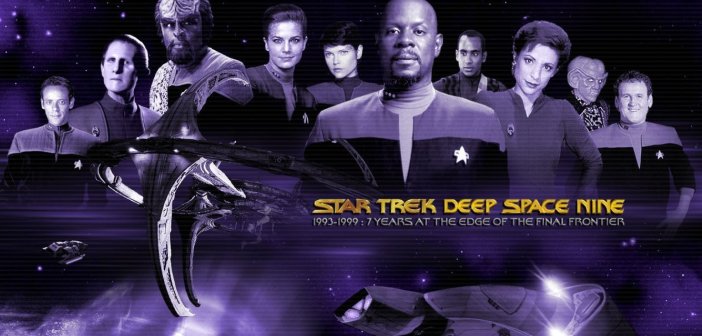
At the height of its popularity in the 1990s, Star Trek had two television series running concurrently as well as a successful series of Next Generation movies (only one of which – First Contact – was any good). Deep Space Nine is the great unwatched, underrated masterpiece of the franchise – dismissed by fans and viewers alike because of the decision to base the series on a stationary space station rather than a ship, the series nonetheless grew from the same rocky start as TNG into a powerful political science fiction serial with incredible character development (Worf returns and becomes 80,000 times more of a badass than he was before) and branching, season-long arcs (rather than the traditional standalone episodes of TOS and TNG). Less successful was Star Trek Voyager – despite a promising premise (a ship gets stranded in a previously unexplored area of space, many light years away from charted space) and the great casting of Kate Mulgrew (known today as ‘Red’ from Orange is the New Black) as Captain Janeway, the series quickly regressed into a drab clone of TNG. Similarly, prequel-series “Enterprise” started out interesting enough before fizzling out in its fourth season.
As always, the franchise was kept alive by its fans. Despite understandable fatigue from TV audiences and the 2002 big screen outing “Star Trek Nemesis” being a critical and financial flop, in the interim period between 2005 and 2009, there was never really any doubt that Star Trek would return.
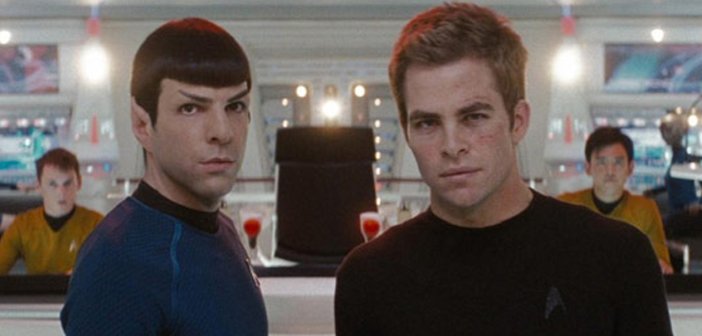
2009’s reboot “Star Trek”, was a well-received action/adventure to many, but for fans it seemed like the franchise was finally raising the white flag of surrender, becoming the same, basic space opera as any other kind of fantasy, with none of the human storytelling or Roddenberry magic of the various TV series. Honestly, it really is a very enjoyable action/adventure, but the criticism has legs – the film moves so fast that it never really has the texture required to make the world feel real. Unlike the series, where characters work hard and devote their lives to betterment to make it into Starfleet, the film presents a Han Solo-esque version of Captain Kirk who’s magically brilliant at everything and trips, stumbles and punches his way into the Captain’s chair. Well-worn genre-themes of absent fathers and destiny complexes make for an experience that feels a lot more like a superhero movie than a science fiction film. And yet… why not? For all its wonders, Star Trek IS a difficult nut to crack. Without the comfort of nostalgia, it’s hard to pinpoint ONE moment in 50 years that will win over new fans instantly. While they generally work better as cartoon pastiches not to be taken too seriously, JJ Abrams’ reboot films are a neat “Greatest Hits” album that have demonstrably fuelled new interest in the franchise’s roots. The latest film “Star Trek Beyond” in particular, is a warm love-letter to the Original Series and left me smiling from ear to ear.
So why is Star Trek still so popular? Well-written stories are genuinely a dime a dozen nowadays, as are science fiction stories. What makes Trek special is its trumpeting optimistic outlook for the future, a future where we won’t blow ourselves up, where we will actually make it past the Khan Noonien Singhs, the Romulan warmongers and the Donald Trumps of the world, where the indomitable courage and resilience of the human spirit will see us through. What keeps it alive are its fans. Even in the face of total annihilation or cultural irrelevance, we don’t believe in the no-win scenario. The Human Adventure is Just Beginning.
Featured Image Credit

